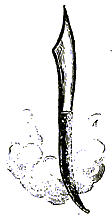
PART ONE
LESSON ONE
THE NAVAJA
The navaja is a weapon too well known in our land, we won't burden our lessons with a detailed explination of its uncomplicated mechanism. It is enough to know that they come in different sizes, and that not all are suitable for our purpose.
In Spain there are several cities notable for the good character and temper that they give to the blades of their navajas, admired for their keen edge and fine finish, that neither break nor bend after having pierced two hard coins or a block of wood two inches thick. Albacete, Santa Cruz de Mudela, Guadij, Solana, Mora, Bonilla, Valencia, Sevilla, Jaen and many other places have masters of the forge, from whose hands come more perfect work in this genre than that which is produced abroad, and are reccomended to the afficiandos. Yet since the figure of the navaja isn't always adequate for the use that will be given in the course of our lessons, we say that the blade must have a length of one palm or more, and be perfectly secure between the handle scales, preference given to the navaja de muelle* over any other.
The figure of the blade is of great interest, since not with just any can the diestro dare to strike all the golpes indiscriminately. So, then, the chosen should be of much belly towards the point, have three to four fingers of breadth, and a point somewhat prolonged, for giving the floretazos; all as shown in the present illustration.

*navaja de muelle="switchblade"